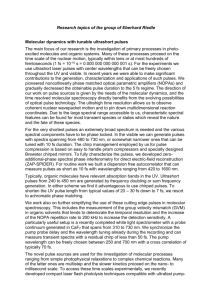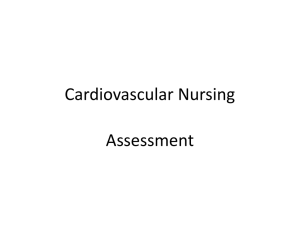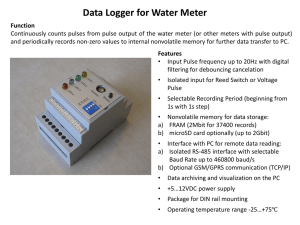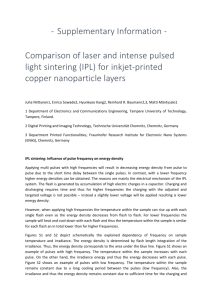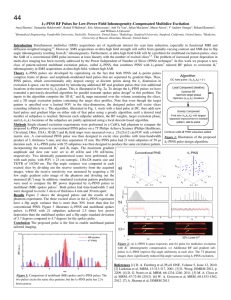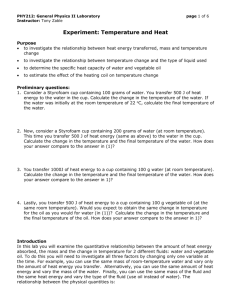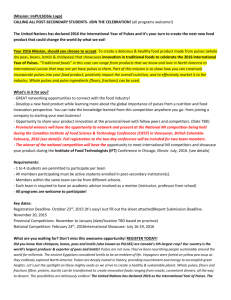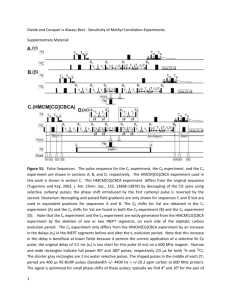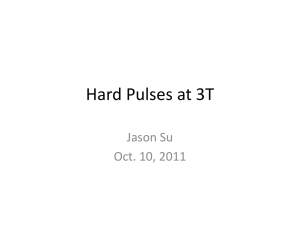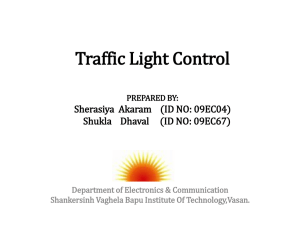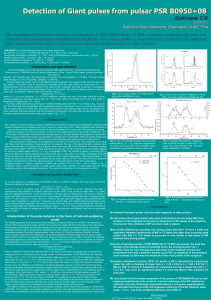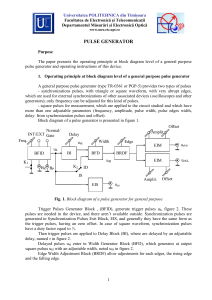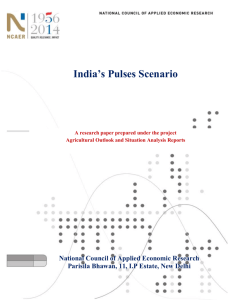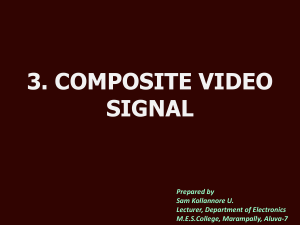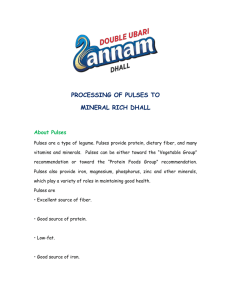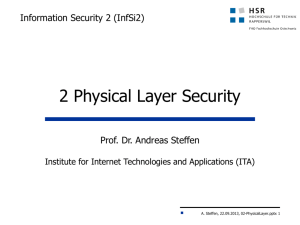Document
advertisement
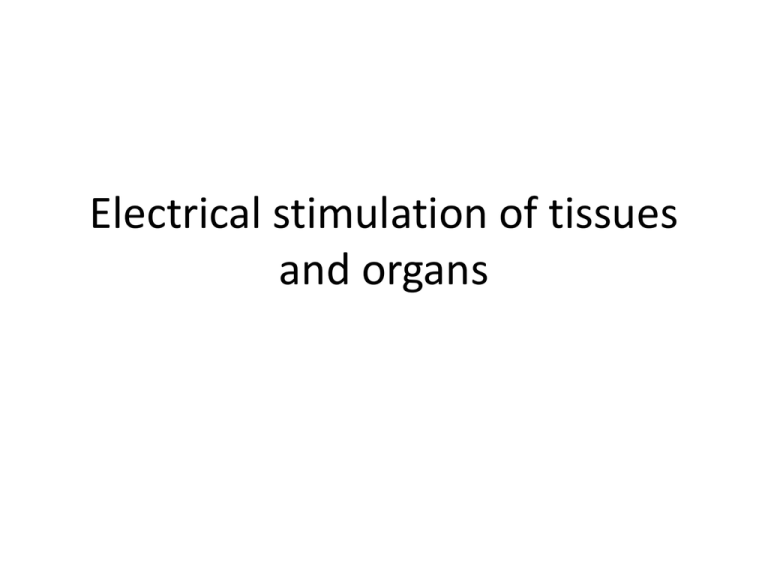
Electrical stimulation of tissues and organs Electrical stimulation uses an electrical current to cause a single muscle or a group of muscles to contract. • It is used to normalize the function of the motor nerves and muscles • Low-frequency (till 200 Hz) pulse currents are used. The amplitude does not exceed 50mA Electric Pulse is a change of short duration in voltage or in current intensity. • • • • • Classification: high-voltage pulses pulses of high current intensity video pulses radio pulses. • High-voltage pulses are usually observed during the discharge of a capacitor into an active load; they have an aperiodic shape • Current surges of large magnitude can have a shape analogous to that of high-voltage pulses • Electric current or voltage pulses (predominantly of the same polarity) are called video pulses if they have a nonzero direct component • Radio pulses are intermittent, high-frequency or ultrahigh-frequency oscillations of electric current or voltage Types of video pulse waveform Sine Square Triangle sawtooth Square trapezoidal exponential bell-shaped Pulse parameters Параметры импульса • • • • • • front 1 - 2, top 2 - 3 fall-off 3 - 4 tail 4 – 5 amplitude duration t1 – t5 Characteristic elements that determine the shape and quantitative parameters of a video pulse are: • • • • • amplitude A front τf, duration τp fall-off τfo slope of the pulse top (ΔA) • tail b • phase describes the current moving in one direction for a predetermined period of time monophasic current locates on one side of the baseline biphasic current is present on both sides of the baseline. • phase duration is the time elapsed from the beginning to the end of one phase. • pulse duration, also known as "pulse width," is the time elapsed from the beginning to the end of all phases in one pulse. The duration of video pulses ranges from fractions of a second to tenths of a nanosecond (10−9 sec) • rise time (front) measures the time for the leading edge of the phase to increase from the baseline to the peak amplitude of phase • rate of pulse rise • fall time is the time for the terminal edge of the phase to return to the zero baseline from the peak amplitude of the phase. • amplitude depicts the height of the electrical event Pulsed current Pulsed current • A periodic sequence of video pulses • is characterized by frequency, the repetition rate of the waveform expressed in pulses per second or cycles per second • off-on time ratio - the ratio of the repetition period to the duration of the electric pulse • duty cycle is defined as the ratio between the pulse duration and the period of a pulsed current Radio pulses • Radio pulses are intermittent, high-frequency or ultrahighfrequency oscillations of electric current or voltage . The duration and amplitude of such pulses depend on the parameters of the modulating oscillations. The duration and amplitude of radio pulses correspond to the parameters of modulating video pulses; the carrier frequency is an additional parameter. The duration of radio pulses ranges from fractions of a second to a nanosecond. Strength-duration curve for stimulus of an excitable tissue Strength-duration curve for stimulus of an excitable tissue • Shape of the curve relates intensity of electrical stimulus (strength) and time duration necessary to cause the tissue to depolarize • Rheobase describes minimum intensity of current necessary to cause tissue excitation when applied for a maximum duration • Chronaxie describes length of time (duration) required for a current of twice the intensity of the rheobase current to produce tissue excitation Lapicque's Equation • for the strength-duration curve. This equation for determining current I: a I b • where b relates to the rheobase value and a relates to the chronaxie value; τ is duration • Lapicque's hyperbolic formula combines the threshold amplitude of a stimulus with its duration
